Roya Farassat
Rendezvous
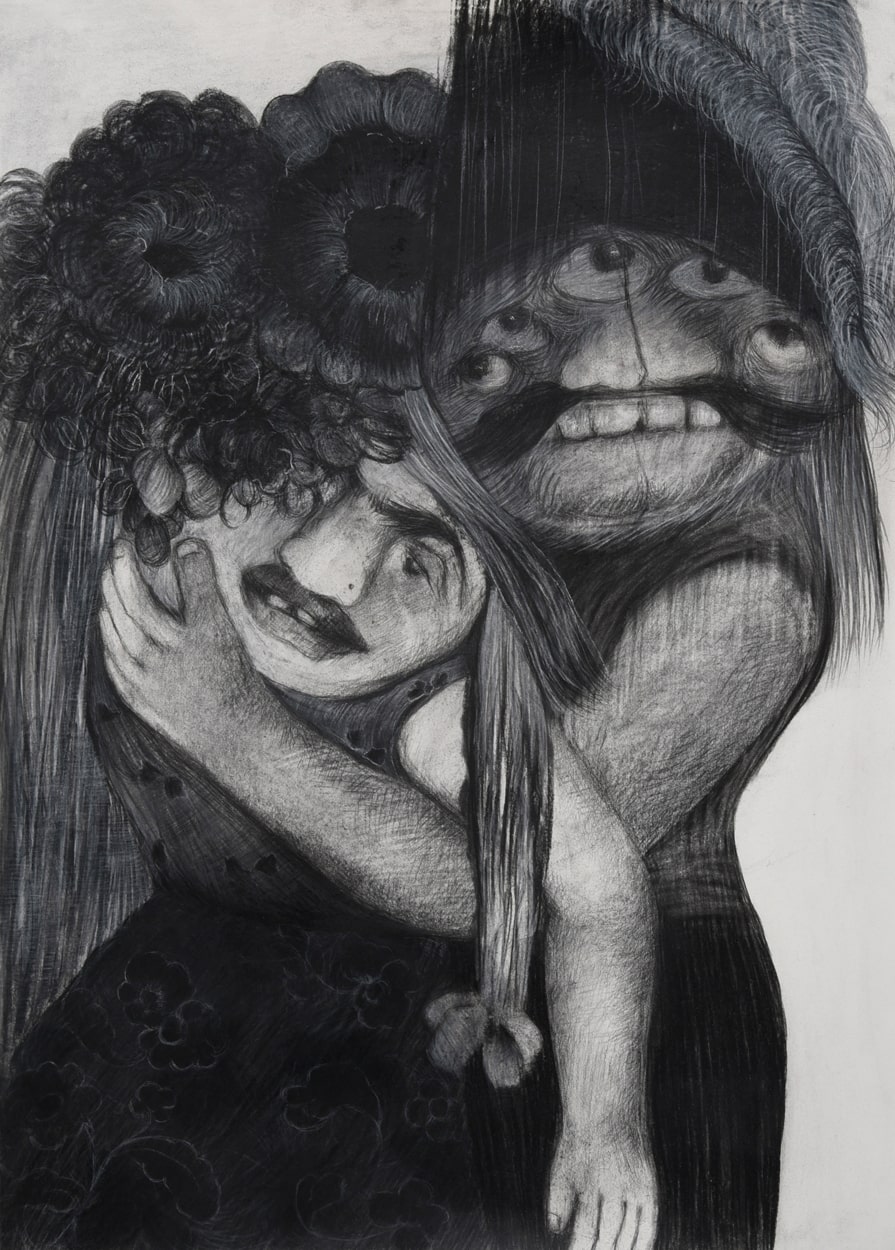
I Love You, Doesn’t Mean I’ll Stop Looking, 2021
Charcoal on Paper - Drawing,
22” x 30”
Photo Courtesy of the Artist and Hamzianpour & Kia
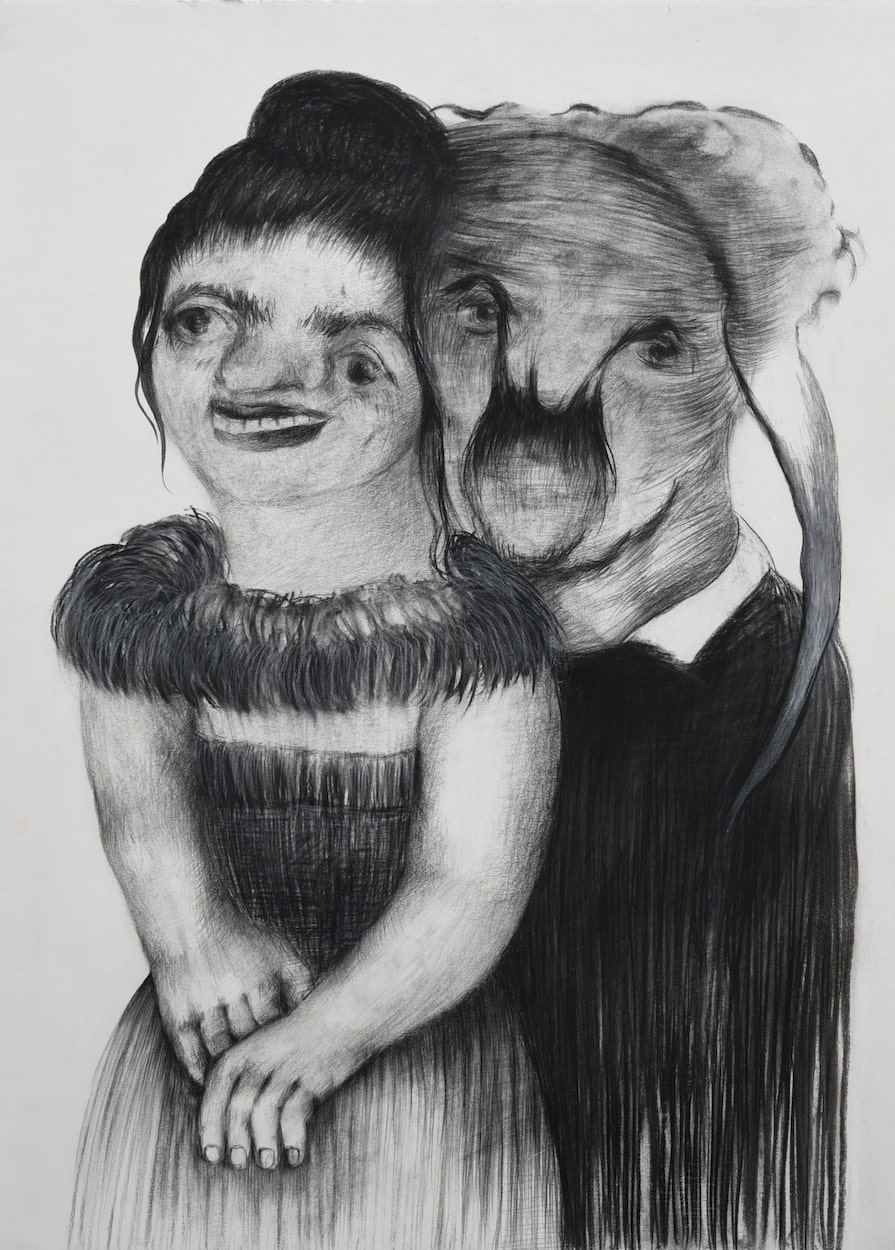
Wife Material, 2021
Charcoal on Paper - Drawing,
22” x 30”
Photo Courtesy of the Artist and Hamzianpour & Kia

Honey To My Mouth, 2021
Charcoal on Paper - Drawing,
22” x 30”
Photo Courtesy of the Artist and Hamzianpour & Kia

Forever Is Too Long My Love, 2021
Charcoal on Paper - Drawing,
22” x 30”
Photo Courtesy of the Artist and Hamzianpour & Kia
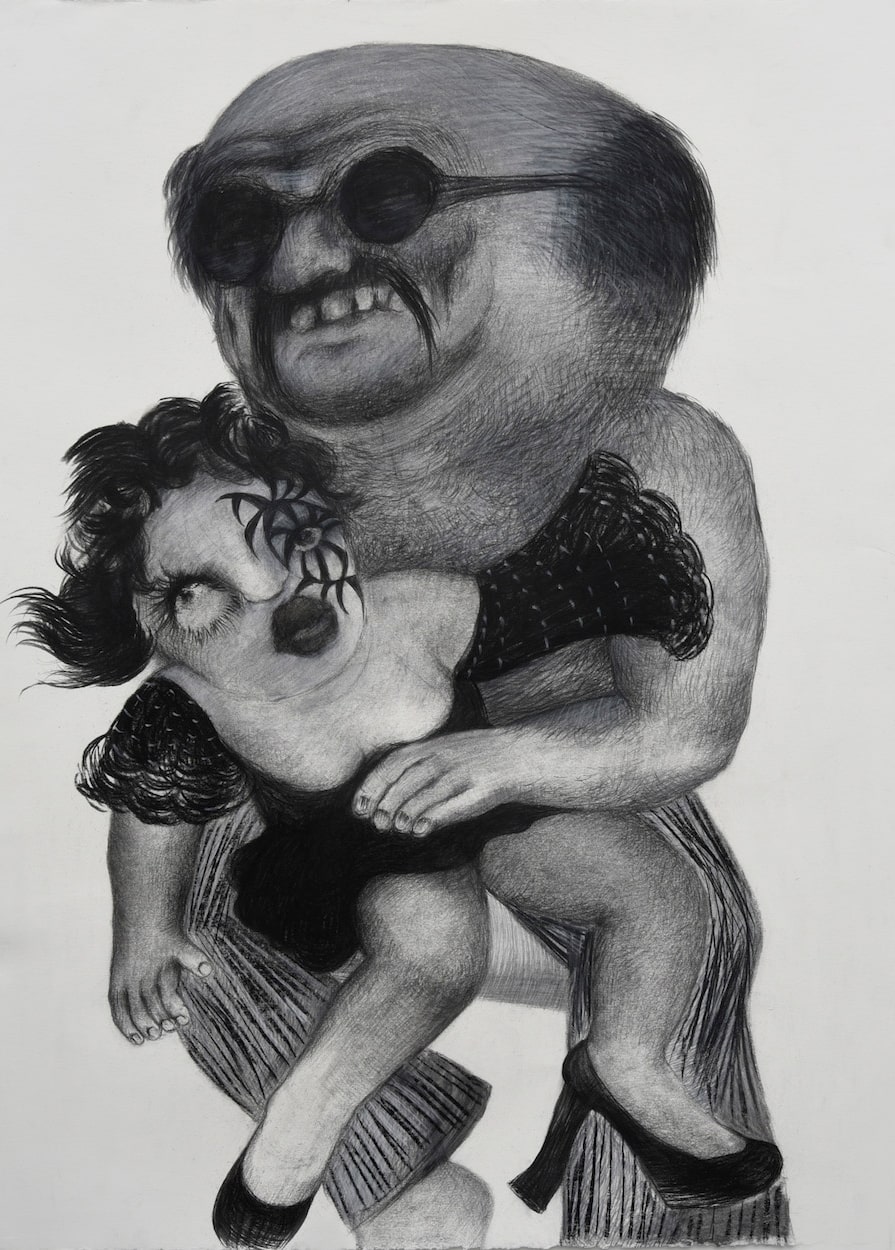
Blind Love, 2021
Charcoal on Paper - Drawing,
22” x 30”
Photo Courtesy of the Artist and Hamzianpour & Kia
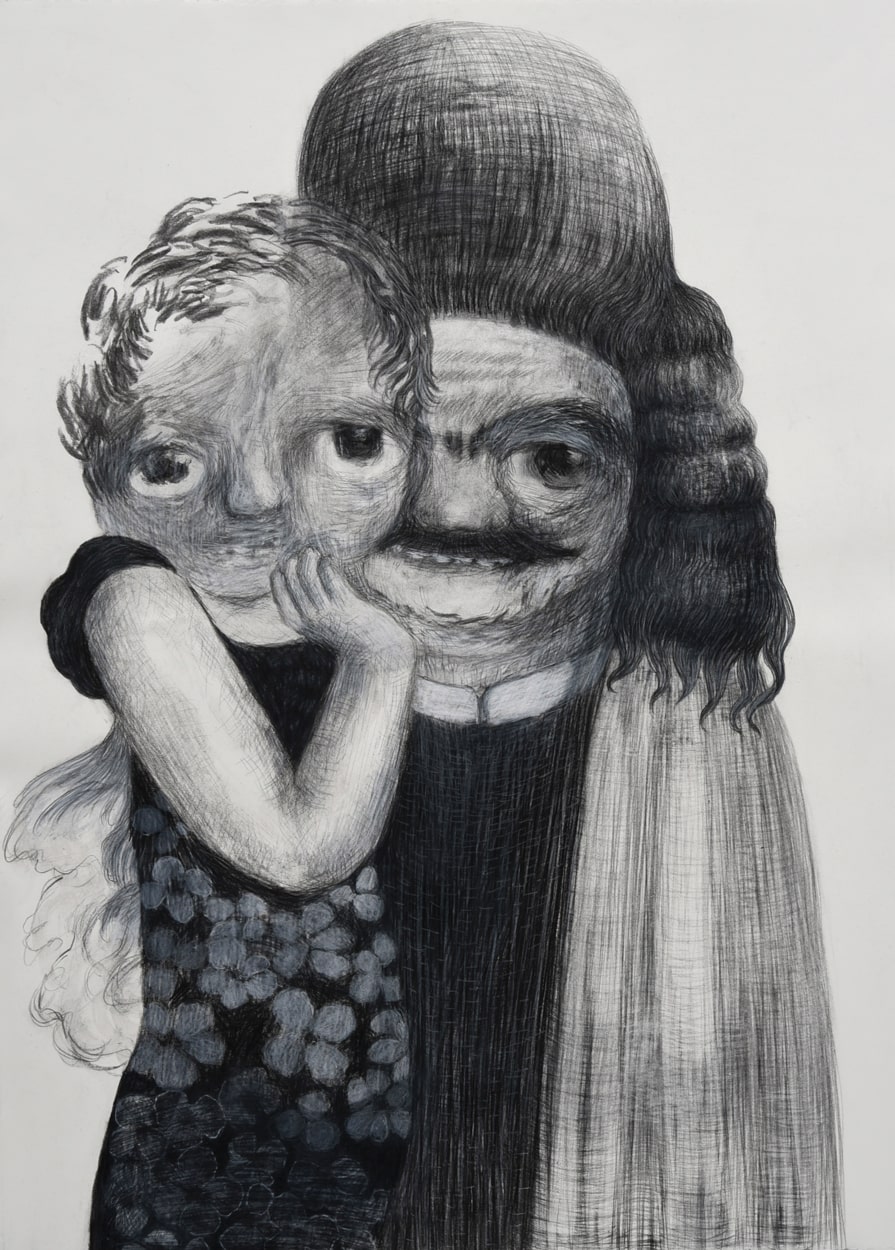
She Loves Me, She Loves Me Not, 2021
Charcoal on Paper - Drawing,
22” x 30”
Photo Courtesy of the Artist and Hamzianpour & Kia
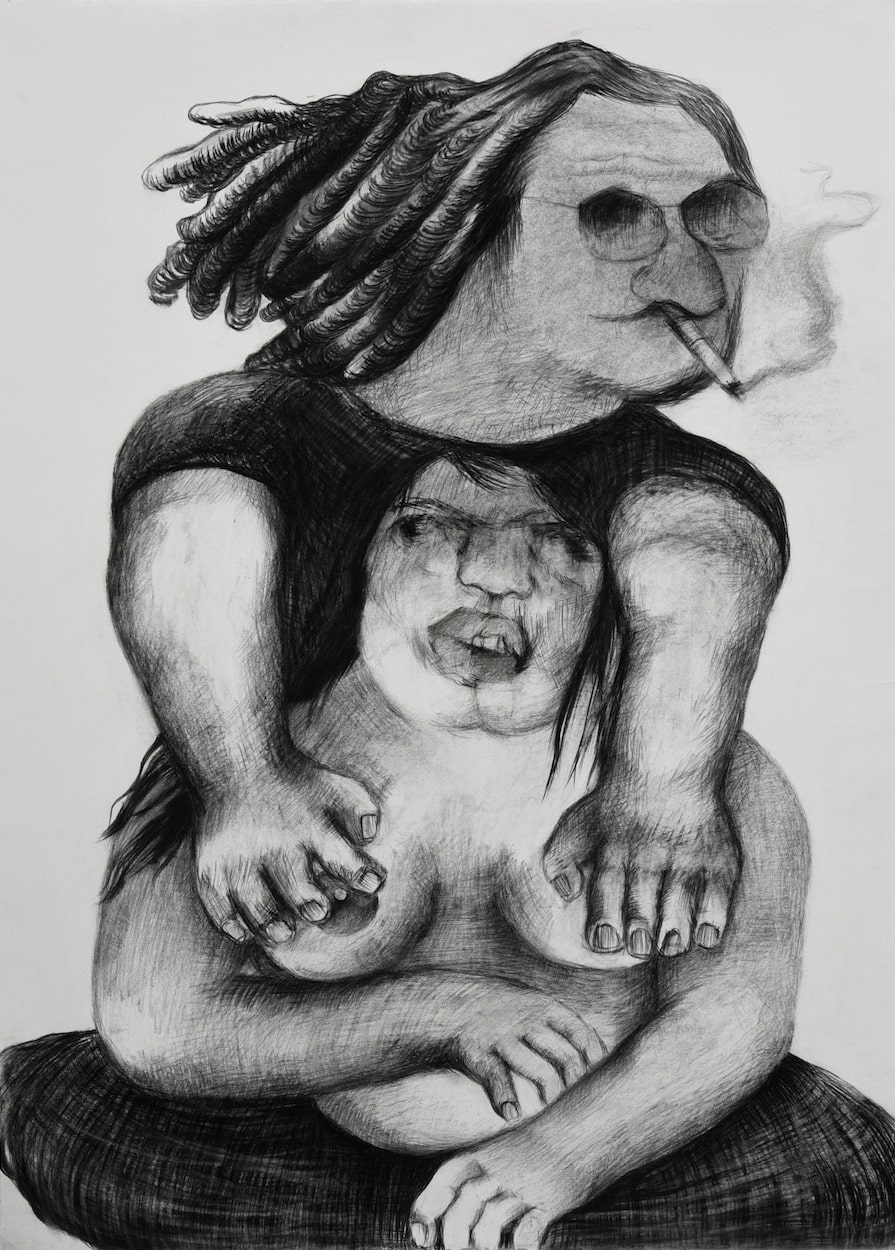
Milk and Cookies, 2021
Charcoal on Paper - Drawing,
22” x 30”
Photo Courtesy of the Artist and Hamzianpour & Kia
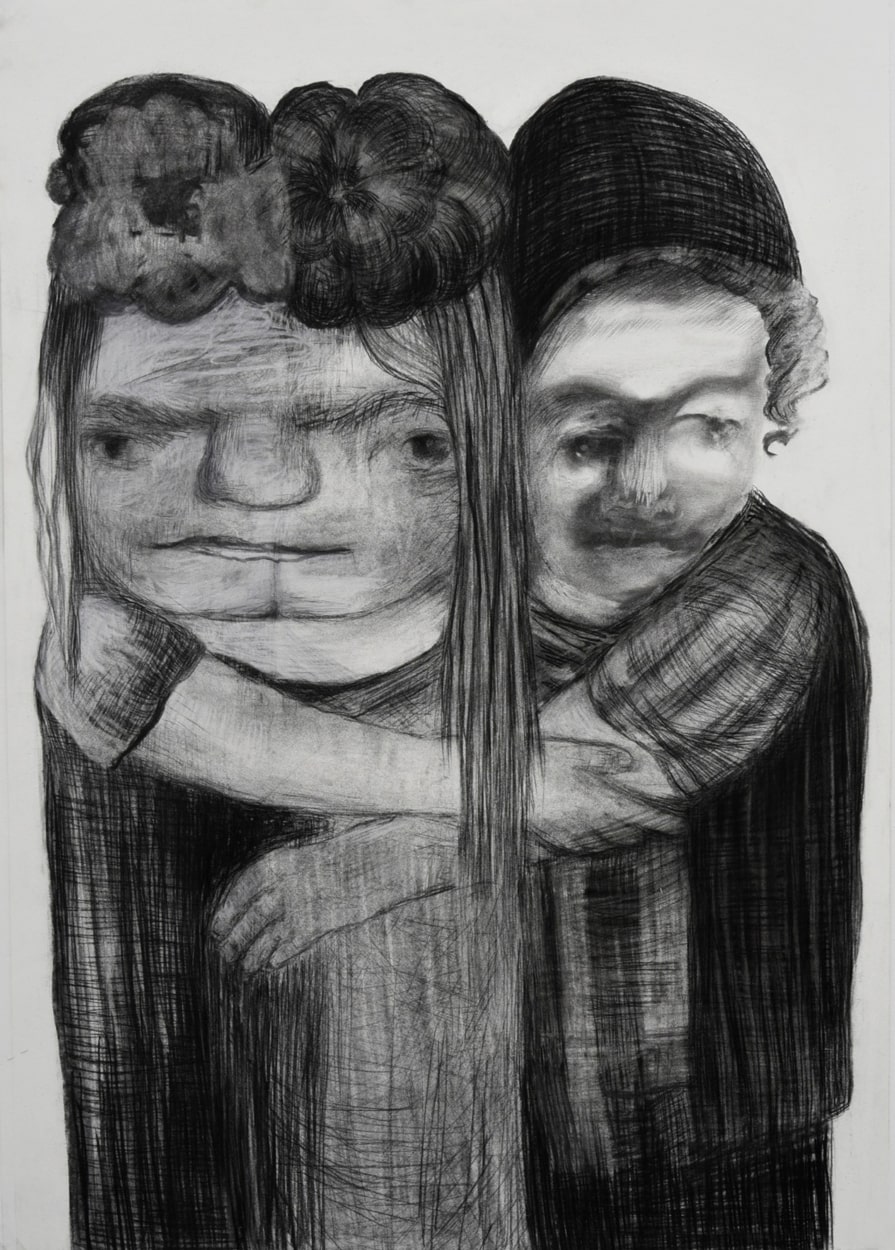
You’re Just Too Good to Be True, 2021
Charcoal on Paper - Drawing,
21” x 30”
Photo Courtesy of the Artist and Hamzianpour & Kia
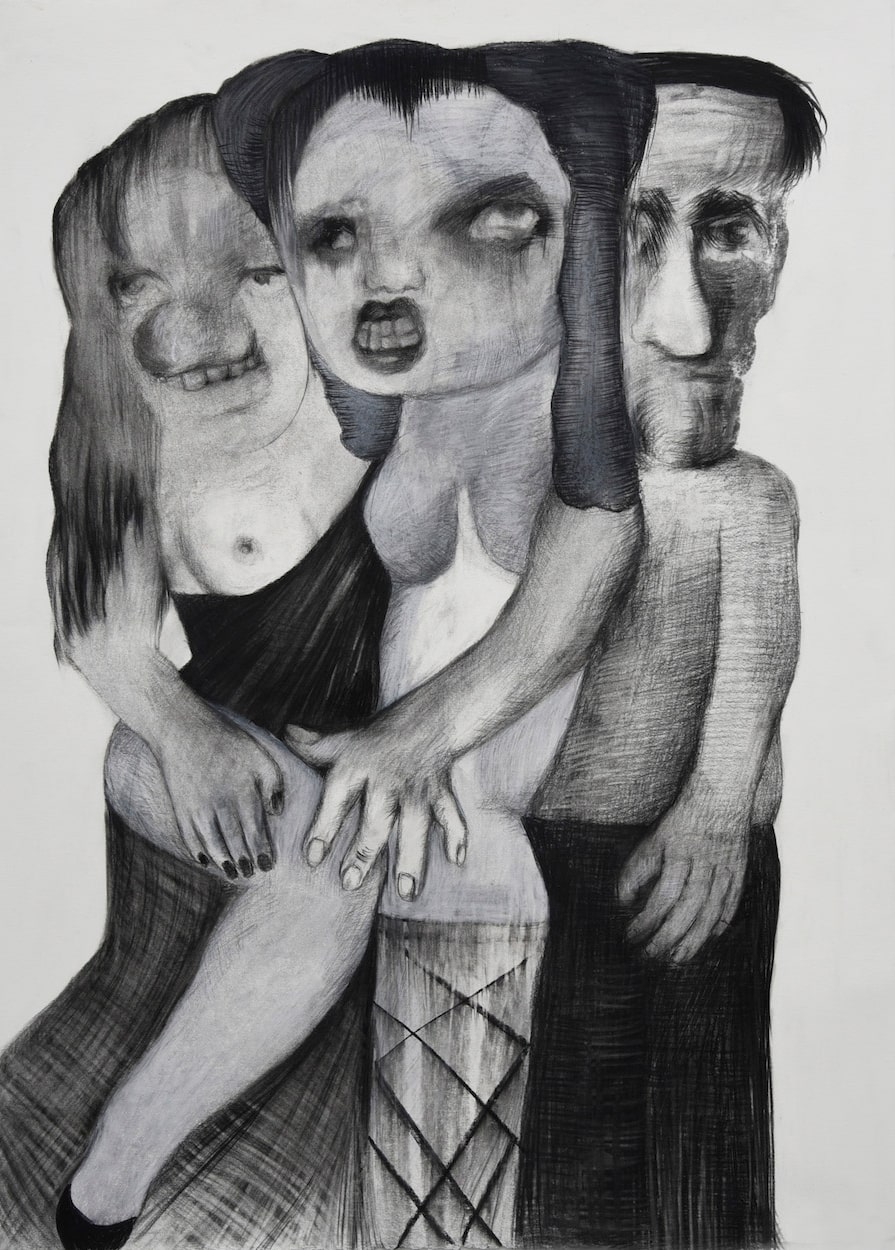
Why-Not-Make-Things-More-Complicated, 2021
Charcoal on Paper - Drawing,
22” x 30”
Photo Courtesy of the Artist and Hamzianpour & Kia
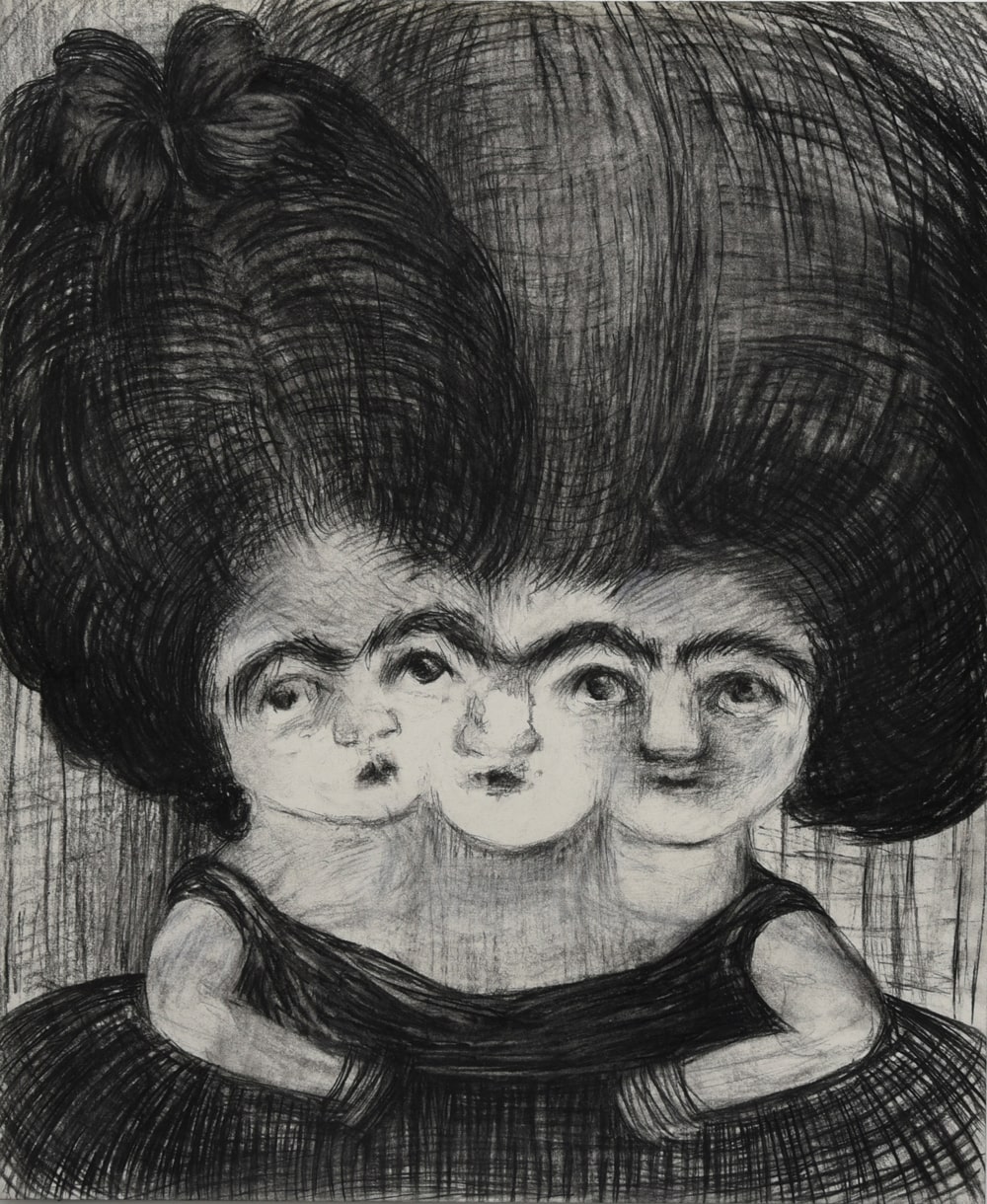
Sisters, 2021
Charcoal on Paper - Drawing,
14” x 17”
Photo Courtesy of the Artist and Hamzianpour & Kia
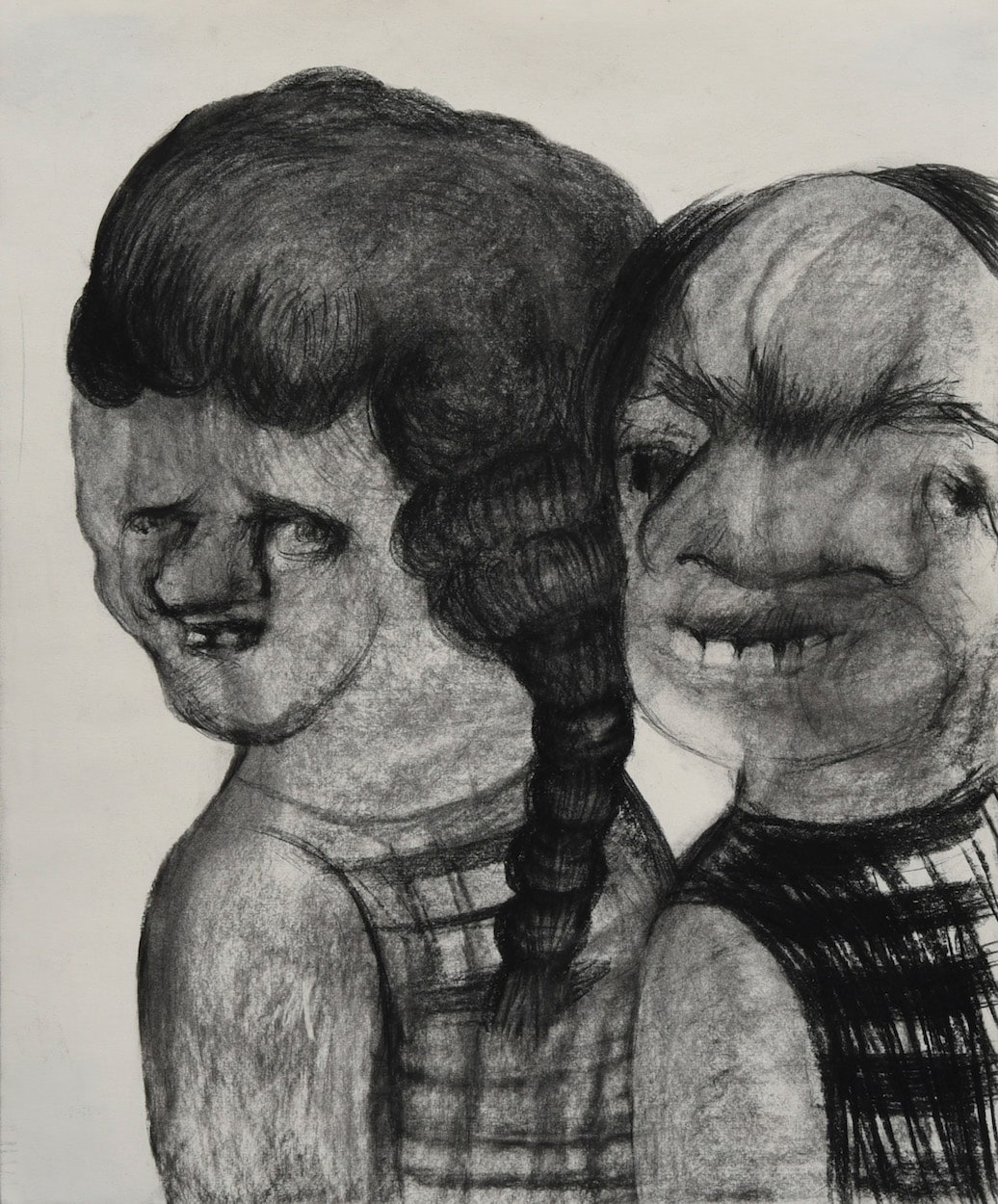
Her Superman, 2021
Charcoal on Paper - Drawing,
14” x 17”
Photo Courtesy of the Artist and Hamzianpour & Kia
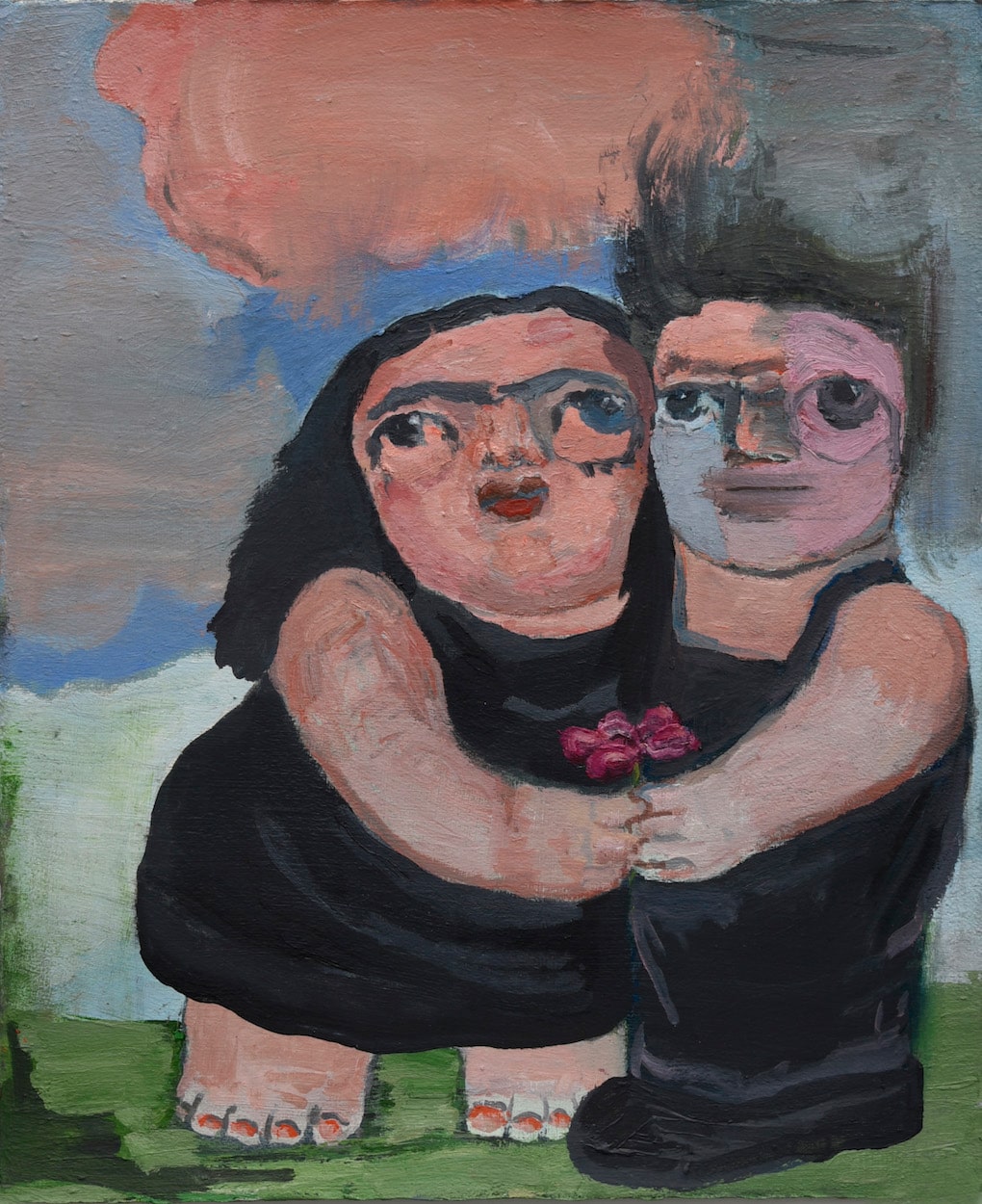
Happily Ever After, 2021
Charcoal on Paper - Drawing,
20” x 24”
Photo Courtesy of the Artist and Hamzianpour & Kia
PRESS RELEASE
Hamzianour & Kia is pleased to present Rendezvous by Roya Farassat, an exhibition of new works on paper that further the artist’s ongoing exploration of heteronormative sexual politics. Rendezvous reflects on what Farassat describes as “relationships of convenience,” romance that is more of a practical agreement than a bond of trust. Likening such arrangements to norms that permeate Persian cultural life, Farassat is interested in how these relationships, which might otherwise seem very progressive, tend to foster conservative behavior. And this series of macabre, satirical portraits draw from the artist’s personal observations of gender performance. In each portrait, gender is exaggerated in a manner that makes desire legible, highlighting the masquerade necessary to make relationships of convenience workable without intimacy. The body language in She Loves Me, She Loves Me Not and Blind Love, for instance, parodies well-worn stereotypes of male machismo and female timidity. And the mood in That’s Her Superman and Wife Material tinges such titles with an unambiguous irony. Masking, therefore, appears to be the dominant idea in this series. The pieces Forever Is Too Long My Love and Honey to My Mouth also point to this concern, the former presenting two figures who are literally masked and the latter intimating a more emotional disguise. As a whole, Rendezvous meditates on masking and desire, which requires a play of exposing and withholding the self, drawing into focus how all love requires some degree of deception. Love, true love, can only be built on small acts of harmless deceit. Imagine how utterly unengaged two lovers would have to be to practice unfailing honesty; the boredom would be excruciating. Disguising one’s feelings is what keeps desire in doubt and therefore still alive—a dynamic in which Farassat’s embracing “lovers” seem wholly absorbed. Imprinted on her subjects’ vacant eyes is a strong feeling of withdrawal that conflicts with the passionate embrace in which they are all depicted. This play of opposites creates an atmosphere of doubt, as if like a gravitational pull that weighs down on each figure, further suggested by their distortion. Not only are Farassat’s lovers squished together but they also appear pressed up against the picture plane, making their faces oblong, split, or blurred. This distortion is an effect of the artist’s intuitive process. Farassat builds her compositions instinctively by schmearing cloud-like charcoal forms to build a foundation of gray. And then, like gazing at clouds in the sky, the artist finds her composition through a process of mark making and erasing, action and reaction. In essence, Farassat reveals the imagery she sees in the gray field through a Rorschach-like approach to drawing. What arises out of this exercise is a distinctive sensibility that combines the darkness of Goya’s late paintings with the lightness of Guston’s social commentary. In Rendezvous, lightness and darkness collide, serving as a reminder that sexual intimacy demands not just openness but also its opposite, concealment. Stereotypical behavior is a reliable way to hide someone’s inner feelings while keeping sexual desire legible to others. The fact that relationships of convenience often rely on conservative gender norms is an irony that should not be lost on anyone. Farassat’s work calls attention to the enduring ways that societal misogyny still shapes some of the present’s supposedly most liberatory forms of relating to one another. Roya Farassat is an Iranian-American visual artist whose abstract and figurative work includes drawings, paintings, and sculptures. Farassat received her Bachelor of Fine Arts from Parsons School of Design. Within her studio practice, she explores the psychological complexities of isolation; specifically, women’s identity living under a patriarchal society. Farassat has exhibited widely in solo and group exhibitions at galleries, universities, and museums in the United States and abroad; including The Queens Museum, The Albin Polasek Museum, The Ormond Memorial Art Museum, The Villa Terrace Decorative Art Museum, The Taubman Museum, The Edward Hopper House Museum, Scope Miami Art Fair, Asian Contemporary Art Fair, Spring Art Fair, Dubai Art Fair, and Jamm Contemporary Art Auction (Kuwait). She has been awarded workspace residencies from Henry Street Settlement and The Makor/Steinhardt Center and was nominated for Magic of Persia Contemporary Art Prize in London as well as The Jameel Art Prize at The Victoria & Albert Museum. Farassat’s work has been featured in The Financial Times, The New York Times, The Boston Globe, Hyper Allergic, The Brooklyn Rail, Art Radar, Art Critical, The W Magazine, Independent Persian, Iran Times, and Flaunt Magazine. Farassat currently lives and works in New York.
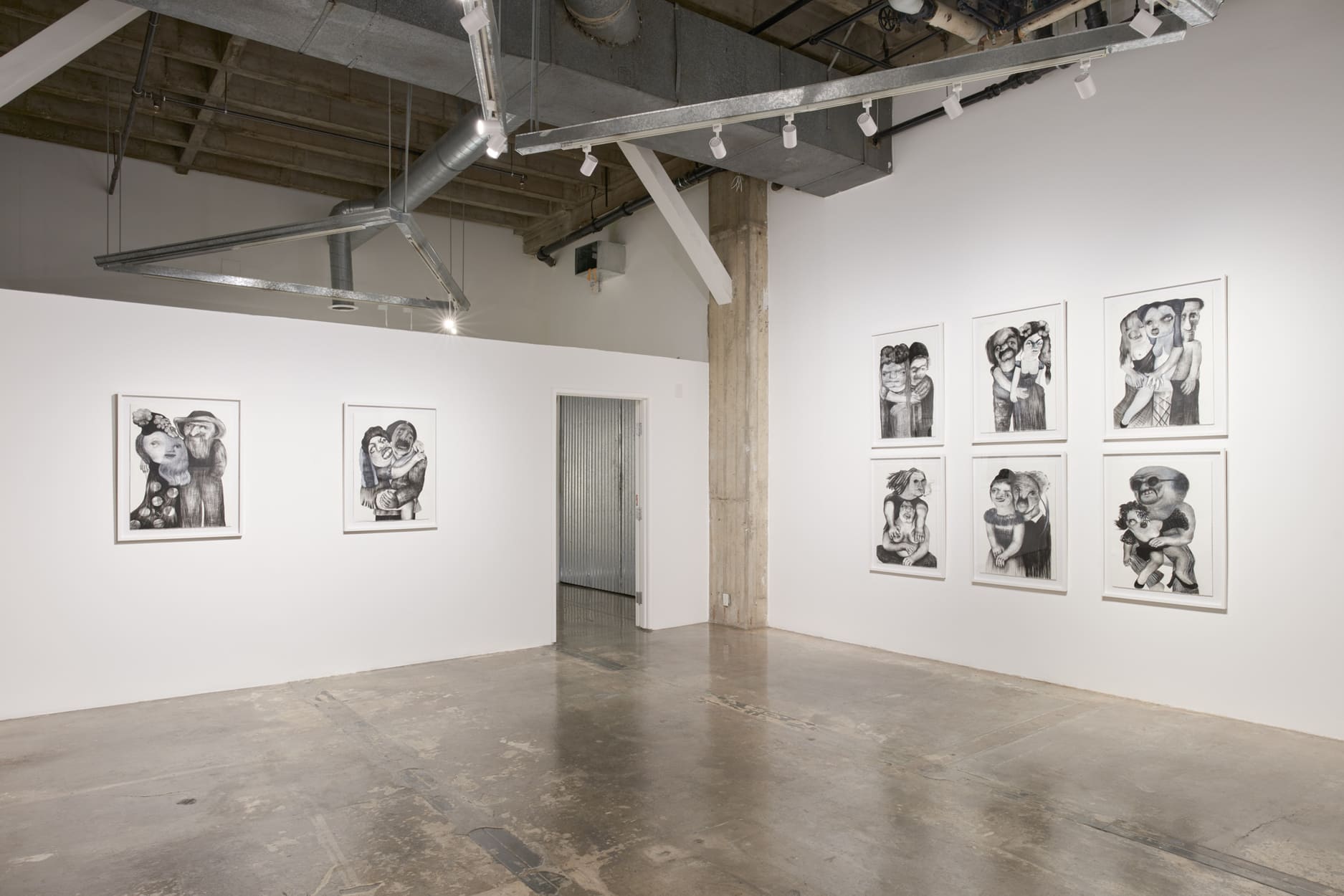
Installation Image at Hamzianpour & Kia, 2022
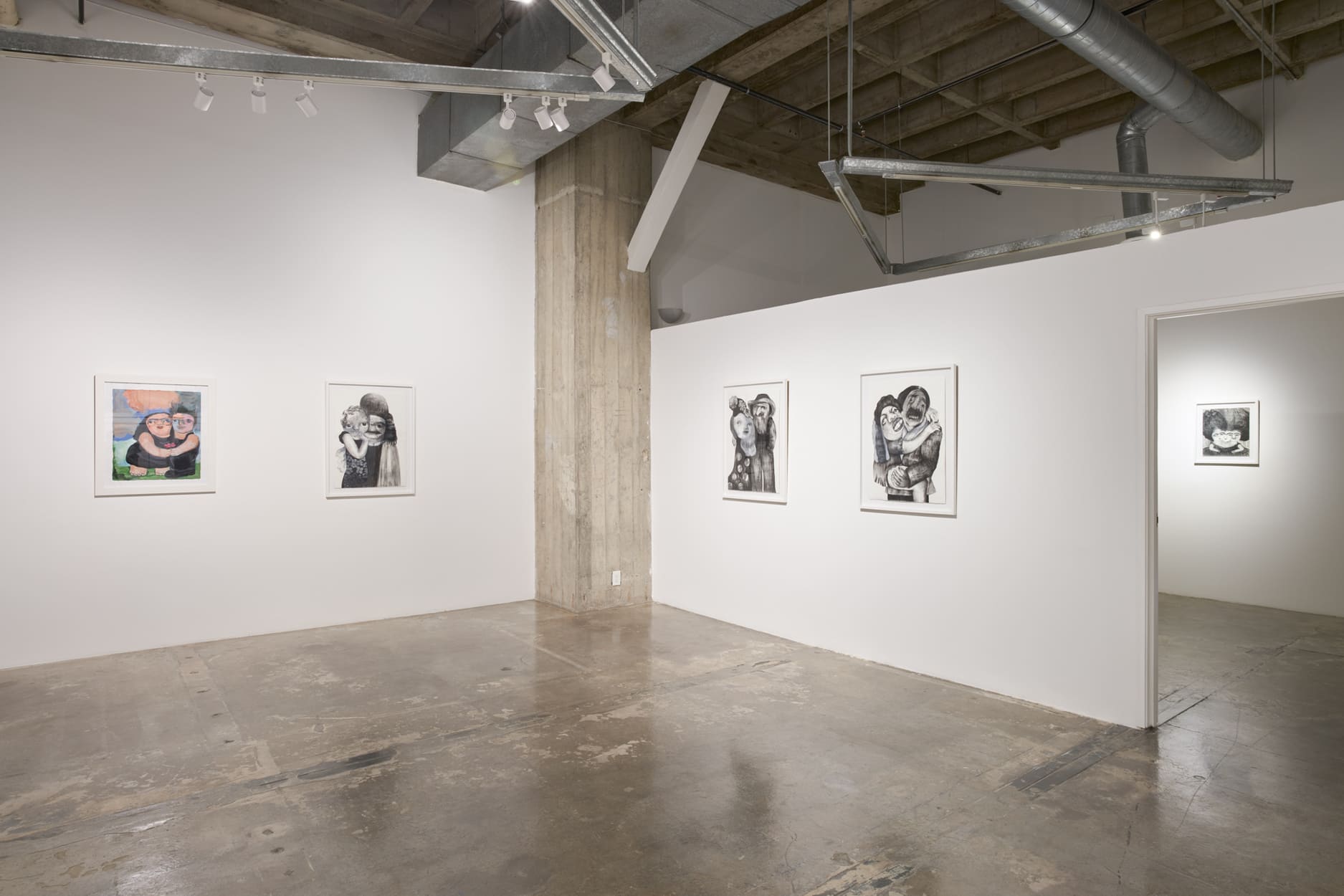
Installation Image at Hamzianpour & Kia, 2022